ISRO GK Questions 2024: Defence Aspirants who are appearing for the AFCAT, CDS, NDA, MNS, TA, ACC, other defence exams and SSB Interviews can check the 200+ latest most expected Isro related 2024 GK Quiz Questions and Answers. If you are going to appear in competitive exams, then we suggest you go through questions in the ISRO related GK Quiz 2024.
Many defence competitive exams will ask questions from ISRO’s Timeline from the 1960s till date, the initial to recent Satellite Launches, Foreign Satellites, Spacecraft Missions, Launch Missions, Launchers, Spacecrafts, etc. We have provided ISRO 2024 General Knowledge Quiz including questions and answers.
ISRO GK Questions
Q) What is Gaganyaan Programme? What are the goals/objectives of the Gaganyaan programme?
Ans: The Gaganyaan Programme envisages undertaking the demonstration of human spaceflight to Low Earth Orbit (LEO) in the short term and will lay the foundation for a sustained Indian human space exploration programme in the long run. The objective of the Gaganyaan programme is to demonstrate the indigenous capability to undertake human space flight missions to LEO. As part of this programme, two unmanned missions and one manned mission are approved by the Government of India (GoI).
Q) What are the likely benefits as a result of undertaking the Gaganyaan programme?
Ans: The Human spaceflight programme has both tangible and intangible benefits for the nation, which includes:
- Progress towards a sustained and affordable human and robotic programme to explore the solar system and beyond.
- Advanced technology capability for undertaking human space exploration, sample return missions and scientific exploration.
- Future capability to actively collaborate in global space station development & to carry out scientific experiments of interest to the nation.
- Create a broad framework for wider Academia-Industry partnership in taking up development activities for national development.
- Ample scope for employment generation and human resource development in advanced science and R&D activities.
- Unique opportunity to inspire and excite Indian youth and steer many students toward careers in science and technology towards challenging jobs that encourage knowledge, innovation and creativity.
- The programme will strengthen international partnerships and global security through the sharing of challenging and peaceful goals. Having a vibrant human spaceflight programme can be leveraged as a potent foreign policy tool.
Q) What is the total cost of the Gaganyaan programme?
Ans: The total cost of Gaganyaan Programme ~ ₹ 9023.00 crores
Q) What is the purpose of uncrewed missions before crewed missions?
Ans: The uncrewed missions are for technology demonstration, and safety and reliability verification and will be heavily instrumented to study the performance of systems before the crewed flight.
Q) What are the new technologies required for the Gaganyaan programme?
Ans: The major new technologies required for the Gaganyaan programme are as follows:
- The human-rated launch vehicle
- Crew escape systems
- Habitable orbital module
- Life support system
- Crew selection and training and associated crew management activities
Q) How ISRO executing the Gaganyaan programme?
Ans: The Gaganyaan Programme is going to be a major National effort. The overall programme coordination, systems engineering and implementation will be carried out by ISRO. Further, the human-rated launch vehicle, crew escape system, Orbital module and essential infrastructure will be realised by ISRO utilizing the in-house expertise and with the participation of Industry, Academia and National agencies. The private players in the country have developed significant expertise in niche areas, and this will be effectively utilized in the programme.
Q) What are the eligibility and selection criteria of astronauts selected for the Gaganyaan Programme?
Ans: For the first crewed mission of the Gaganyaan programme, astronaut trainees are selected from a pool of test pilots, based on selection criteria jointly defined by ISRO and the Indian air force which comprise flying experience, fitness, and psychological and aeromedical evaluation (including anthropometric parameters).
Q) Which all Indian agencies are collaborating with ISRO in Gaganyaan Mission?
Ans: Major collaborating partners for Gaganyaan include
- Indian Armed Forces
- Defence Research Development organisation
- Indian maritime agencies – Indian Navy, Indian Coast Guard, Shipping Corporation of India, National Institute of Oceanography, National Institute of Ocean Technology.
- Indian Meteorological Department
- CSIR Labs
- Academic institutes
- Industry partners
Q) What is the plan of ISRO for a mission beyond the Gaganyaan programme?
Ans: After the successful completion of the Gaganyaan programme, the next step will focus on achieving the capability for a sustained human presence in space.
Q) Whether the Government also plan to set up a space station in future? The details thereof including the human crew model developed for the same?
Ans: Activities associated with the Space station will be an extension of the Gaganyaan Programme. The detailed proposals and modalities for the space stations will be worked out in future. The Indian space station will be a platform for conducting scientific and industrial research in myriad areas of fundamental, applied and engineering sciences.
Q) What is the full form of ISRO?
Ans: ISRO Stands for Indian Space Research Organisation
Q) Who is considered the “founding father” of the Indian Space Programme?
Ans: Dr Vikram A Sarabhai is considered the founding father of space programmes in India.
Q) When was ISRO formed?
Ans: ISRO was formed on August 15, 1969.
Q) When was the Department of Space constituted?
Ans: Department of Space (DOS) and the Space Commission were set up in 1972. ISRO was brought under DOS on June 1, 1972.
Q) What is the main objective of ISRO?
Ans: The prime objective of ISRO is to develop space technology and its application to various national needs.
Q) How these Objectives are met?
Ans: ISRO has established two major space systems, INSAT for communication, television broadcasting and meteorological services, and Indian Remote Sensing Satellites (IRS) system for resources monitoring and management. ISRO has developed two satellite launch vehicles, PSLV and GSLV, to place INSAT and IRS satellites in the required orbits.
Q) Where the Satellites are made?
Ans: Satellites are made at ISRO Satellite Centre (ISAC), Bangalore.
Q) Where the Rockets / Launch vehicles are made?
Ans: Rockets / Launch Vehicles are made at Vikram Sarabhai Space Centre (VSSC), Thiruvanathapuram.
Q) From where are the rockets launched?
Ans: ISRO’s Launch facility is located at SDSC SHAR from where Launch Vehicles and Sounding Rockets are launched. Sounding rockets are also launched from TERLS at Thiruvananthapuram.
Q) How can I order for Satellite data?
Ans: You can get data from National Remote Sensing Centre (NRSC), Hyderabad. Visit the website: www.nrsc.gov.in for more details.
Q) Where the Space Programme began in India?
Ans: Indian Space Programme began at Thumba Equatorial Rocket Launching Station (TERLS) located at Thumba near Thiruvanathapuram.
Q) Why was Thumba selected for being rocket launching station?
Ans: The geomagnetic equator of the earth passes over Thumba.
Q) What is a sounding rocket?
Ans: A sounding rocket is a rocket, which is intended for assessing the physical parameters of the upper atmosphere.
Q) What does the letter ‘RH’ and the numerals on an Indian sounding rocket signify?
Ans: RH stands for ‘Rohini’ sounding rocket and the numeral indicate the diameter of the rocket in mm.
Q) When was the first rocket launched in India? Which was the rocket?
Ans: The first rocket, a Nike-Apache, procured from the US, was launched on November 21, 1963.
Q) When did India begin developing its own rockets?
Ans: India’s first indigenous sounding rocket, RH-75, was launched on November 20, 1967.
Q) What is the expansion of VSSC and when it was formed?
Ans: Space Science and Technology Centre (SSTC) was renamed as Vikram Sarabhai Space Centre (VSSC) in 1972 in honor of Dr Vikram Sarabahi who met with his untimely demise on December 30, 1971.
Q) How many Centres are there in ISRO?
Ans: There are six major Centres and several other Units, Agencies, Facilities and Laboratories spread across the country.
Q) Where are these Centres located?
Ans: Vikram Sarabhai Space Centre (VSSC), Thiruvananthapuram; ISRO Satellite Centre (ISAC), Bangalore; Satish Dhawan Space Centre (SDSC – SHAR) at Sriharikota; Liquid Propulsion Systems Centre (LPSC) at Thiruvananthapuram, Bangalore and Mahendragiri, Space Application Centre (SAC), Ahmedabad and National Remote Sensing Centre (NRSC), Hyderabad.
Q) What is the major function of these Centres?
Ans: Launch Vehicles are build at VSSC, Thiruvananthapuram; Satellites are designed and developed at ISAC, Bangalore; Integration and launching of satellites and launch vehicles are carried out from SDSC, Shriharikota; Development of liquid stages including cryogenic stage is carried out at LPSC, Sensors for Communication and Remote Sensing satellites and application aspects of the space technology are taken up at SAC, Ahmedabad and Remote Sensing satellite data reception processing and dissemination by NRSC, Hyderabad.
Q) Which is the first launch vehicle of India?
Ans: Satellite Launch Vehicle-3 (SLV-3) is the first launch vehicle of India.
Q) When was it launched?
Ans: The first successful launch of SLV-3 took place on July 18, 1980 from SDSC SHAR.
Q) What are the other launch vehicles developed by India?
Ans: Apart from SLV-3, India developed Augmented Satellite Launch Vehicle (ASLV), Polar Satellite Launch Vehicle (PSLV) and Geosynchronous Satellite Launch Vehicle (GSLV).
Q) How satellites are broadly classified?
Ans: Satellites are broadly classified into two, viz., Communication satellites and Remote Sensing satellites.
Q) What is a communication satellite?
Ans: A communication satellite usually operates from the Geosynchronous orbit catering to requirements in communication, television broadcasting, meteorology, disaster warning etc.
Q) What is a Remote Sensing satellite?
Ans: A Remote Sensing satellite is intended for natural resource monitoring and management and operates from a Sun Synchronous Polar Orbit (SSPO).
Q) What is NNRMS?
Ans: NNRMS is the acronym for National Natural Resources Management System. NNRMS is an integrated resources management system aimed at optimal utilisation of the natural resources of the country by proper and systematic inventory of resource availability using Remote Sensing data in conjunction with conventional techniques.
Q) Which is the first Indian satellite?
Ans: Aryabhata is the first Indian satellite
Q) From where was it launched?
Ans: It was launched from the former Soviet Union on April 19, 1975.
Q) Which is the heaviest satellite launched by India from Indian soil?
Ans: INSAT-4CR weighing 2130 kg and launched by GSLV-F04 on September 2, 2007 is the heaviest satellite launched from India.
Q) How many launches of launch vehicles were carried out so far?
Ans: 84 launch vehicle missions were carried out from India so far (till May 2022).
Q) How many satellites have been launched by India?
Ans: The total number of satellites launched is 342 from 34 different countries. (till May 2022)
Q) Which is the first operational launch vehicle of India?
Ans: PSLV is the first operational launch vehicle of India. It had so far three developmental flights and nineteen operational flights – 21 continuously successful flights.
Q) What is Chandrayaan-1?
Ans: Chandrayaan-1 is a scientific investigation – by spacecraft – of the Moon. The name Chandrayaan means “Chandra- Moon, Yaan-vehicle”, –in Indian languages (Sanskrit and Hindi) , – the lunar spacecraft. Chandrayaan-1 is the first Indian planetary science and exploration mission.
Q) When, and from where, Chandrayaan-1 was launched?
Ans: Chandrayaan-1 was launched on October 22, 2008 from Satish Dhawan Space Centre at Sriharikota (SHAR), India.
Q) How long Chandrayaan-1 was operational?
Ans: Chandrayaan-1 was operational for 312 days till August 28, 2009.
Q) What are Chandrayaan’s scientific goals?
Ans: The Chandrayaan-1 mission is aimed at high-resolution Remote Sensing of the Lunar surface in visible, near Infrared, low energy X-rays and high-energy X-ray regions. Specific scientific goals are: To prepare a three-dimensional atlas (with a high spatial and altitude resolution of 5-10 m) of both near and far side of the moon. To conduct chemical and mineralogical mapping of the entire lunar surface for distribution of mineral and chemical elements such as Magnesium, Aluminium, Silicon, Calcium, Iron and Titanium as well as high atomic number elements such as Radon, Uranium & Thorium with high spatial resolution. By simultaneous photo geological and chemical mapping, we will be able to identify different geological units, which will test the hypothesis for the origin and early evolutionary history of the moon and help in determining the nature of the lunar crust.
Q) What are the scientific instruments onboard Chandrayaan-1?
Ans: There are eleven scientific instruments onboard Chandrayaan-1 spacecraft. Five of them are Indian and other six are from ESA (3), NASA (2) and Bulgarian Academy of Sciences (1) selected through ISRO Announcement of Opportunity (AO). Two of the ESA instruments have Indian collaboration.
Q) What is the temperature on the moon?
Ans: The moon undergoes extremes in temperature – the side of the Moon receiving sunlight becomes scorching hot at about 130 ºC, and freezing cold at -180 ºC during night.
Q) Is there any Life on moon?
Ans: So far none of the lunar missions have detected any signature of presence of life on the Moon.
Q) Why do we see only one side of the Moon?
Ans: As the Moon orbits, it always presents the same side towards the Earth. This is so because Earth’s gravity has slowed the Moon’s rotation so that it just matches the time it takes to go around the Earth. So the Moon takes the same amount of time to revolve around the Earth as it takes to rotate around its spin axis.
Q) What is the total budget for realising Chandrayaan-1 mission?
Ans: The budgetary estimate for realising the proposed Indian lunar mission Chandrayaan-1 stands at Rs. 386.00 crores (about $76 million). This includes Rs. 53.00 crores (about $11 million) for Payload development, Rs. 83.00 crores (about $17 million) for Spacecraft Bus, Rs. 100.00 crores ($20 million) towards establishment of Deep Space Network, Rs. 100.00 crores ($20 million) for PSLV launch vehicle and Rs. 50.00 crores ($10 million) for scientific data centre, external network support and programme management expenses.
Q) What is Antrix?
Ans: Antrix is the commercial wing of ISRO, a single window agency for marketing Indian space capabilities both products and services to the world.
Q) What is a communication satellite?
Ans: A satellite placed in an orbit around the earth in order to relay television, radio, data and phone signals. India operates 17 communication satellites from Geo-Synchronous Orbit (as of June 2021).
Q) What is a communication transponder?
Ans: A transponder is an electronic device on a satellite which facilitates communication from source to destination. It receives the signals through uplink frequency, translates it into downlink frequency, amplifies it and beams back to earth.
Q) Which are the frequency bands used for satellite communication?
Ans: The major frequency bands used for satellite communication in India are S-band, C-band, Upper Extended C band, Ku band and Ka band. The INSAT/GSAT satellites carry transponders in these bands.
Q) Is there a policy to govern the operations of communication satellites over India?
Ans: The operations of communication satellites over India are governed by “A policy framework for satellite communication in India” commonly known as Satcom Policy and the “norms, guidelines and procedures for implementation of the policy frame-work for satellite communications in India” commonly known as Satcom NGP which were approved by the Government in 1997 & 2000 respectively. Copies of these documents are available in www.isro.gov.in.
Q) How to avail satellite capacity/bandwidth for a Satcom Network?
Ans: Any Communication or Broadcast service provider or and an agency intending to establish Satcom network can avail the satellite capacity/bandwidth by submitting their requirement through INSAT/GSAT Capacity Requirement Format (ICRF). Guidelines for Registration of INSAT/GSAT Capacity Requirement are available in www.isro.gov.in. Operating and other relevant licenses are required from DOT for telecommunication services and from MoIB for broadcasting services.
Q) Does India permit use of foreign satellites for communication services over India?
Ans: Use of a foreign satellite for communication services over India is permitted as per the provisions of Satcom Policy and GOI regulations, guidelines & procedures. Any requirement of capacity on foreign satellites has to be registered through ICRF. Only television broadcasters are permitted to avail C-band capacity from foreign satellites directly which will be scrutinized and permitted for use by MOIB & DOS.
Q) What is the life of a communication satellite?
Ans: Mission life of a communication satellite varies from 7 to 15 years depending on the amount of fuel/propellant it carries which is decided based on factors like number of transponders, on-board power generation, the lift-off mass, etc.
Q) What happens to a communication satellite after its end-of-life?
Ans: After completion of mission life, a communication satellite in Geo-synchronous orbit (GSO) is sent to an orbit above GSO which is higher by about 200-250 Km,and all the communication equipment are switched off permanently.
Q) What is a remote sensing satellite?
Ans: A Remote Sensing satellite is intended for natural resource monitoring and management and operates from a Sun Synchronous Polar Orbit (SSPO).
Q) Is there any policy available on remote sensing satellite data dissemination in India?
Ans: Remote sensing data to Indian users are disseminated as per Remote Sensing Data Policy 2011.
Q) What is SAMS stand for?
Ans: Considering the reforms in the space sector, erstwhile NNRMS has been re-structured as Space Applications Management System (SAMS) with enhanced scope. Its apex body is known as Planning Committee of SAMS (PC-SAMS), which provides policy guidelines and oversee the progress of SAMS activities. It is having 10 theme based Standing Committees. Its Secretariat is located at Earth observation applications & Disaster management support Programme Office (EDPO), ISRO HQ., Bangalore.
Q) What are the objectives of ISRO’s International Cooperation?
ISRO is pursuing international cooperation with space agencies and space related bodies with the objectives of enhancing the capacity of Indian space program, strengthening diplomatic relations and formulating global guidelines on space.
Q) What is the spread of ISRO’s International Cooperation?
ISRO cooperates with space entities of both space faring and space aspiring countries. Space cooperative documents at country level and space agency level are with 59 countries and 5 multilateral bodies till June 2021.
Q) What are the major areas of ISRO’s international cooperation?
Ans: Realisation of joint satellite missions; accommodation of payloads/instruments in Indian satellites; establishment of the ground stations in other countries to support ISRO’s missions; sharing of satellite data and expertise; and contribution to the global initiatives on disaster management are some of the major areas of cooperation.
Q) Whether ISRO has Ground Stations outside India?
Ans: ISRO is operating Telemetry Tracking and Tele-Command (TTC) ground stations in Indonesia, Brunei and Mauritius. ISRO also operates remote sensing data reception station in Antarctica.
Q) Which are all the major joint satellites realized through international cooperation?
Ans: ISRO has jointly realized two satellites with CNES (French national space agency), viz., Megha-Tropiques(launched in 2011) and SARAL(launched in 2013).
Q) What is UNNATI?
Ans: UNAATI – UNispace Nanosatellite Assembly &Training by ISRO – is one of the UNISPACE+50 initiatives announced by ISRO. Under this programme, ISRO is offering two-month training on Nano-Satellite building to international participants. Till now, ISRO trained 59 officials from 33 countries in two batches under this programme.
Q) Whether ISRO is providing training on space technology applications to officials from other nations?
Ans: ISRO provides training in space technology applications for professionals and students from the Asia-Pacific region through the UN-affiliated Centre for Space Science Technology Education in Asia and the Pacific (CSSTEAP) and the Indian Institute of Remote Sensing (IIRS), both located in Dehradun.
Q) Whether ISRO has an office outside India?
Ans: ISRO has established ISRO technical Liaison Unit (ITLU) in Indian Embassies in Washington, Paris and Moscow. ISRO officials are deputed on a rotational basis to these units and they work as ISRO Technical Liaison Officers / Counsellors (Space) in the respective Indian Embassies.
Q) Whether India is a signatory to UN treaties related to space?
Ans: India signed and ratified the Outer Space Treaty, Rescue Agreement, Liability Convention, and Registration Convention. India has signed the Moon Treaty but has not ratified it.
Q) Whether ISRO is a member of any international organization?
Ans: ISRO is a member of many international organisations for space matters including IAF, APRSAF, CEOS, COSPAR, IADC, ICG, CGMS and ISECG.
Q) How ISRO is pursuing international cooperation in space science & planetary exploration?
Ans: ISRO is pursuing international cooperation in space science and planetary exploration by accommodating scientific instruments from other countries in ISRO’s missions and also sharing data from the space science missions with the international scientific community through the Indian Space Science Data Center.
Q) Whether ISRO is supporting international efforts on disaster management?
Ans: ISRO is a signatory of the International Charter “Space and Major Disasters” and APRSAF initiative Sentinel Asia. Through these platforms, ISRO supports disaster management activities across the globe by sharing satellite data and expertise. ISRO is also part of the Satellite Aided Search and Rescue (SASAR) Programme and providing operational services to the users in India and seven neighbouring countries since 1998.
Q) What is ISRO’s safety policy.
Ans: Total commitment to maintaining the highest standards of safety, occupational health and environmental protection during all its activities.
Q) How does ISRO ensure safety?
Ans: ISRO Centres and Units have full-fledged Safety divisions to ensure the safety of employees and the environment from all types of work-related hazards through Standard Operating Procedures (SOP). They ensure safety through strict in-process surveillance of all hazardous activities.
Q) What safety measures does a contactor have to follow for civil works?
Ans: ISRO Contractor safety manual is available on the ISRO website for reference. Visit https://www.isro.gov.in/tenders/manual-tendering/schedule-H
Q) How does ISRO handle e-waste and chemical waste?
Ans: Disposal of e-waste and chemical waste is carried out through an authorised recycler following SOPs.
Q) Does ISRO have an Environment policy?
Ans: Yes, it is encompassed under its Safety, Occupational Health and Environmental (SOH&E) Policy.
Q) Where is ISRO’s Safety Head Office located?
Ans: It is located in Bengaluru, Karnataka state.
Q) How does ISRO improve its safety measures?
Ans: Regular training for those employees engaged in hazardous activities, mock drills, fire drills, First-aid demonstrations, etc. are being conducted. In addition, a periodic safety audit of all Centres / Units by teams of safety experts is carried out.
Q) How does ISRO ensure the quality of systems realised through external industries/partners?
Ans: The control of quality during the realisation process through the process and quality plans approved by ISRO and carried out by the external work-centres, whereas the final acceptance of these systems is subject to the quality surveillance and audit of ISRO’s Quality Assurance teams.
Q) How does ISRO ensure improvement in the quality of space systems?
Ans: Initiatives towards further improvement of the quality of operational systems with respect to launch vehicles, spacecraft, ground systems and space applications are regularly taken up as the department’s quest for continual improvement.
Q) What are the reliability and quality standards followed by ISRO?
Ans: ISRO publishes reliability and quality standards known as ISRO Technical Standards (ITecS). Where such standards are yet to be published by ISRO, the internationally accepted standards applicable for space are used.
Q) What is Mangalyaan / Mars Orbiter Mission (MOM)?
Ans: Mangalyaan / Mars Orbiter Mission is a space probe orbiting Mars and is India’s first interplanetary mission to the planet Mars.
Q) When, and from where, Mars Orbiter Mission was launched?
Ans: Mars Orbiter Mission was launched on November 5, 2013 from Satish Dhawan Space Centre at Sriharikota (SHAR), India.
Q) When did Mars Orbiter Mission reach Mars?
Ans: Mars Orbiter Mission reached the orbit of Mars on 24 September 2014.
Q) What is the mission life of Mars Orbiter Mission?
Ans: Designed mission life of Mars Orbiter Mission (MOM) is six months and is over by 23rd March 2015. But MOM has successfully completed six years in its orbit as on 24th September 2020.
Q) What are Mars Orbiter Mission’s scientific goals?
Ans: To understand Mars’ surface features, morphology, mineralogy and Martian atmosphere using indigenous scientific instruments.
Q) What are the scientific instruments on board Mars Orbiter Mission?
Ans: Mars Orbiter Mission carries five scientific instruments, namely Mars Colour Camera (MCC), Thermal Infrared Imaging Spectrometer (TIS), Methane Sensor for Mars (MSM), Lyman Alpha Photometer (LAP) and Mars Exospheric Neutral Composition Analyser (MENCA).
Q) Provide a list of Mars Orbiter Mission scientific publications for getting scientific findings.
Ans: The list of scientific publications related to the Mars Orbiter Mission is provided in the following link.
Q) Is the scientific data available to public?
Ans: Yes. Mars Orbiter Mission scientific data is available to registered users. For accessing the data, visit the following link.
Q) Is there any Life on Mars?
Ans: Direct evidence of life on Mars has not been reported so far.
Q) Which launch vehicle was used to launch Chandrayaan-2?
Ans: Chandrayaan-2 was launched by GSLV MK-III M1 launch vehicle.
Q) When Chandrayaan-2 was launched?
Ans: Chandrayaan-2 was launched on board GSLV MkIII-M1 on July 22, 2019 from Sriharikota.
Q) After launch when Vikram landing was attempted on the lunar surface?
Ans: The landing of Vikram lander on the lunar surface was attempted on September 7th 2019.
Q) What is the life of the Chandrayaan-2 orbiter?
Ans: The precise launch and mission management has ensured a long life of almost 7 years instead of the planned one year.
Q) Whether Chandrayaan-2 carried a camera, which is the best so far?
Ans: One of the payloads on Chandrayaan-2 orbiter is the Orbiter High Resolution Camera (OHRC) with a spatial resolution of 25cm from a 100 km orbit.It provides the sharpest images ever, from a lunar orbital platform.
Q) Where can I access Chandrayaan-2 payload data for science usage?
Ans: Chandrayaan-2 payload data is made available to public through PRADAN portal hosted by Indian Space Science Data Centre (ISSDC).It can be accessed from https://pradan.issdc.gov.in. website.
Q) What is the Sarabhai crater on the Moon?
Ans: Sarabhai is a circular bowl-shaped crater on Mare Serenitatis in the northeast of Moon. The crater coordinates are 24.74N, 21.00E. This crater is named after Dr. Vikram Sarabhai, father of Indian Space program. Chandrayaan-2 imaged this crater on 30th July 2020.
Q) Is there a plan to land on the Moon again?
Ans: Chandrayaan-3 is a follow-on mission to Chandrayaan-2 with Lander and rover configuration. It will attempt safe and soft-landing on the southern high latitudes on the Moon.
Q) What is AstroSat?
Ans: AstroSat is the first observatory class mission of India.
Q) What is the speciality of AstroSat?
Ans: AstroSat has the unique capability of taking simultaneous measurements in wideband from UV to hard X-rays through its four co-aligned experiments.
Q) What is the lifetime of AstroSat?
Ans: AstroSat is designed for a life of five years. But it completed its designed life of five years in September, 2020 and continues to provide significant science results.
Q) What are blackholes?
Ans: Blackholes are one of the three end states of a star. The other two are white dwarf and Neutron Star.
Q) Blackholes do not emit light. How do we know they exist?
Ans: Blackholes though do not emit light, they affect the nearby light and matter due to their gravity, like bending of light or interaction with surrounding matter.
Q) Is AstroSat good for blackhole studies?
Ans: AstroSat cannot study non-interacting isolated black holes. But in interacting binaries, AstroSat will start eating (accretion) matter. When the matter falls on a black hole, on the way they emit X-rays which can be measured by AstroSat.
Q) Only X-rays? What else AstroSat can Do?
Ans: AstroSat also carries a UV telescope which boosts of highest revolution of UV imaging in existence today.
Q) Great, Can I use AstroSat?
Ans: Yes, AstroSat operates as a proposal based observatory. Anybody who can conceive a good science problem can request observations with AstroSat.
Q) No, I do not want to write proposal. Can I use old data?
Ans: Yes, the data obtained from AstroSat is stored (archived) at ISSDC (Indian Space Science Data Centre) at www.issdc.gov.in. You can visit that link for more details.
Q) What are the various applications of satellite navigation?
Ans: Satellite navigation can be used for knowing the user’s position and time. The applications are in the area of civil aviation, high sea and inland waterway navigation, personal navigation, rail transport, road transport, precision agriculture, search & rescue, surveying, monitoring of tectonic plate movement for prediction of earthquakes, etc.
Q) What is NavIC user service area?
Ans: NavIC service area covers the Indian landmass and an area up to 1500 km beyond the Indian landmass. In terms of latitude and longitude, the service area is bounded approximately by the rectangle of latitude 5°S to 50°N and longitude 55°E to 110°E.
Q) Whether other neighbouring countries would also get the benefit of our navigation satellite services?
Ans: Yes, the neighbouring countries which fall within the NavIC service area can use NavIC services with an appropriate user receiver.
Q) Can NavIC be used outside India?
Ans: NavIC can provide the position service within the coverage area. When a user crosses the coverage area, navigation service can be seamlessly provided by using other global navigation satellite systems by having a multi-constellation user receiver.
Q) What are the services provided by NavIC?
Ans: NavIC provides two types of services: Standard positioning services (SPS): Available for civilian use. Restricted services (RS): Available only for authorised use.
Q) Which are the frequency bands being used by NavIC?
Ans: NavIC provides navigation signals in two frequency bands: the L5 band with a centre frequency of 1176.45 MHz and the S-band with a centre frequency of 2492.028 MHz. In near future, a new civilian signal will be introduced in an L1 band with centre frequency of 1575.42 MHz.
Q) Does NavIC provide any service other than navigation?
Ans: NavIC has a provision for the one-way broadcast of short messages. This service is currently being used only for providing emergency warning alerts to fishermen venturing into deep sea, where there is no terrestrial network connectivity.
Q) When will the NavIC service be available for users?
Ans: NavIC service is already available for users.
Q) How can a common citizen use NavIC?
Ans: Application-specific receivers are available commercially off-the-shelf in the market. Also, a few mobile handsets in India are having NavIC capability. A common citizen can obtain these devices and use NavIC.
Q) Is there an option for a common citizen to develop applications based on NavIC?
Ans: NavIC, or any other GNSS system, provides location input that can be used by application software. A common citizen can procure receiver modules, enabled with NavIC, from the market and develop applications on the top of it. If anyone wants to develop a NavIC receiver module, all the signal details are available onhttps://www.isro.gov.in/sites/default/files/irnss_sps_icd_version1.1-201….
Q) Is there an option for a common citizen to develop applications specific for NavIC messaging service?
Ans: Yes. The signal details related to NavIC messaging service are available on https://www.isro.gov.in/sites/default/files/article‑files/irnss‑programme/sis_icd_irnss1a_incois_isro_v1.1_19jul2019.pdf.
Q) Is NavIC available in the mobile phones in India?
Ans: Yes, currently (mid-2021) there are about two dozen mobile handsets in India with NavIC capability. The number is progressively increasing because all the major mobile chipset manufacturers have incorporated NavIC in their latest chipsets.
Q) Can NavIC signals be received and decoded by any navigational receiver?
Ans: The navigational receiver should work in the NavIC frequency bands with a suitable decoder.
Q) If the navigation receiver is kept inside a building and the antenna is positioned outside the building some distance away, will the receiver report position of the receiver inside the building correctly?
Ans: Any navigation receiver computes the position of the antenna and not the receiver unit itself. In case the antenna is placed outside the building with a sufficiently clear view of the sky, and sufficiently less cable length is maintained, the receiver will correctly report the position of the antenna.
Q) What are the error sources which affect the user position accuracy in satellite navigation?
Ans: Ionospheric group delay, satellite ephemeris, and satellite clock are the three major error sources which affect user position accuracy in satellite navigation. Multipath, tropospheric group delay and receiver measurement errors are the other error sources.
Q) Can the navigation receiver be jammed by using high power transmitters?
Ans: Yes, the navigation receiver can be jammed by using strong radio frequency (RF) energy over its operating bandwidth.
Want To Join the Indian Armed Forces and Prepare For The NDA CDS AFCAT Exam?
- Take the best NDA Exam Online Course by SSBCrackExams.
- Take the best CDS Exam Online Coaching by SSBCrackExams.
- Take the best AFCAT Exam Online Course by SSBCrackExams.
- SSB Interview Online Course [Must Enroll]
- Download the SSBCrack Exams app for all defence exams prpeparation.
Q) What is Remote Sensing used for?
Ans: Remote sensing technology is used in a wide variety of disciplines in thousands of different use cases, including most earth sciences, such as meteorology, geology, hydrology, ecology, oceanography, glaciology, geography, and inland surveying, as well as applications in military, intelligence, commercial, economic, planning, and humanitarian fields.
Q) What is the importance of Remote Sensing?
Ans: Remote sensing makes it possible to collect data from dangerous or inaccessible areas. It replaces slower, costly data collection on the ground, providing fast and repetitive coverage of extremely large areas for everyday applications, ranging from weather forecasts to reports on natural disasters or climate change.
Q) How can I obtain satellite data in India?
Ans: One can obtain the satellite images in India as per RSDP 2011. As per this, all satellite images of resolutions up to 1m is can be obtained from NRSC on non-discriminatory basis and “as requested basis”. The data could be free or on a payment basis. All satellite images of better than 1m resolution shall be provided subject to screening and clearance by a committee.
Q) How the satellite data pricing is done?
Ans: Satellite data products are sold to users as per the Remote Sensing Data Pricing Policy (RSDPP-2015). It is a comprehensive policy positioned for defining the modalities for pricing the data from IRS satellites for users. It provides guidelines for data products pricing for various user categories, subscription services, discount criteria etc.
Q) Can I obtain satellite freely for my use?
Ans: To create general awareness and encourage research activities, a certain amount of archived data with a latency of two years was also approved for dissemination through the NRSC EO Open data Archive (NOEDA) facility of BhuvanGeoPortal. It allows the users to select and download Elevation data of CartoDEM(1arc second), Satellite data of Resources at-1/2/2A: AWiFs data(56m), LISS-III(24m) and Oceansat data pertaining to OCM and Scatterometer, derived products from AWiFS and OCM.
Q) What is NavIC? How is it different from IRNSS?
Ans: NavIC (Navigation with Indian Constellation) is the name of the independent stand-alone navigation satellite system of India. This system was earlier known as IRNSS (Indian Regional Navigation Satellite System). The name NavIC was coined by the Hon. Prime Minister of India on the occasion of completion of the constellation in April 2016.
Q) Which are the current navigation satellite systems operating in the world?
Ans: Currently, there are four global systems viz., GPS from the USA, GLONASS from Russia, Galileo from European Union and BeiDou from China. In addition, there are two regional systems viz., NavIC from India and QZSS from Japan.
Q) Common location tracking devices in India indicate “GPS” on them. Does it mean that the product supports only GPS? Is GPS a generic term for satellite navigation?
Ans: GPS is the name of the navigation satellite system owned by the USA. Along similar lines, Russia, European Union, China, India and Japan have their own navigation satellite systems namely GLONASS, Galileo, BeiDou, NavIC and QZSS respectively. GPS is not a generic term for satellite navigation. The correct term is GNSS, which comprises of all the above systems. Common location tracking devices are capable of receiving signals from many or all of the above systems, including NavIC. Hence it is appropriate that the devices indicate that they are capable of “GNSS” instead of “GPS”.
Q) Some mobile phone applications show“location” as “GPS” on the display. Is it correct to do so?
Ans: GPS is the name of the navigation satellite system owned by the USA. Along similar lines, Russia, European Union, China, India and Japan have their own navigation satellite systems namely GLONASS, Galileo, BeiDou, NavIC and QZSS respectively. Mobile phone applications use the location value computed using signals received by the phone hardware. These signals could be from many or all of the above navigation systems, including NavIC. Hence it is appropriate that the applications in the mobile phones indicate the term “location” instead of “GPS”.
Q) What is the need for NavIC when already GPS, GLONASS, Galileo and BeiDou are operating?
Ans: GPS and GLONASS are operated by defence agencies of the respective nations. It is possible that the civilian service can be degraded or denied. NavIC is an independent regional system over the Indian region and does not depend on other systems for providing position service within the service region. It is fully under the control of Government of India.
Q) What are the various segments of NavIC?
Ans: NavIC, like any other navigation satellite system, consists of three segments: Space segment: Consists of the constellation of satellites. Ground segment: Consists of a network of ground stations that generate navigation data to be uplinked to the satellites, and subsequently to be used by the user receiver for aiding in position computation. User segment: Consists of the users utilizing the navigation signals for the purpose of position, navigation, and timing.
Q) Which are the international bodies involved in NavIC coordination activity?
Ans: International Telecommunication Union (ITU), United Nations Office for Outer Space Affairs (UNOOSA), International Committee on GNSS (ICG) and Other navigation service providers (like GPS, GLONASS, Galileo, BeiDou, QZSS)
Q) Can revenue be generated using NavIC?
Ans: NavIC is conceived and built mainly with the aim of having an independent navigation satellite system for India to remove the dependence on foreign satellite systems for navigation service requirements, especially for the strategic sector. It is not built for the purpose of revenue generation. However, many civilian applications are possible using free-to-air navigation signals broadcast from the satellites. The industry can produce receivers capable of receiving NavIC signal and use for various applications in several areas. Thus, economic benefit will accrue to the Indian economy by usage of position and navigation technologies.
Q) What is GNSS?
Ans: GNSS is an acronym for global navigation satellite systems. GNSS allows users worldwide to pinpoint their locations or the locations of objects, other people and goods at any given moment.
Q) What is the difference between global and regional navigation systems?
Ans: Global navigation system caters to the users in the entire world, whereas a regional navigation system caters to the users in the limited service area.
Q) What is the principle of navigation system operation?
Ans: Satellite navigation is based on the use of range measurements between the navigational satellites and the user. Information about the satellite’s coordinates is given to the user through navigation signal. Range measurements are based on the calculation of the receiving signal time delay compared with the signals generated by the user equipment.
Q) What is the minimal quantity of the satellites needed for users positioning?
Ans: For determining position and time, a minimum of four satellites are required. In the ideal case, when the measurements are precise and satellite time is identical to the user’s equipment time, the user position can be computed with 3 satellites. In reality, satellite time differs from the time on user’s equipment. So,difference between user equipment time and satellite time also needs to be determined. That is the reason four satellites are needed.
Q) Is there a limit on the number of users for any satellite-based navigation system?
Ans: There is no limit on the number of users. The satellite-based navigation system sends signals in broadcast mode, and any number of users within the coverage area can receive the signals.
Q) Why are atomic clocks used in navigation satellites?
Ans: Atomic clocks are highly accurate and stable clocks, with errors of less than 10 nanoseconds. The low errors result in providing accurate ranging for position determination.
Q) What is GAGAN?
Ans: GAGAN stands for GPS Aided Geo Augmented Navigation. It is a satellite-based augmentation system developed primarily for safety-of-life civil aviation applications catering to the Indian airspace. It provides correction and integrity messages for GPS. GAGAN has been established jointly by ISRO and AAI. It is being operated and maintained by AAI.
Q) How GAGAN and NavIC systems can be compared?
Ans: Following are the major differences between GAGAN and NavIC systems:
| GAGAN | NavIC |
|---|---|
| An augmentation to the GPS | An independent stand-alone navigation system |
| Provides integrity information | Does not provide integrity information |
| Provides safety-of-life operation support | Does not support safety-of-life operations |
Watch NDA CDS AFCAT Video Lectures Download
You can prepare for SSB Interview and other defence entrance exams such as NDA, AFCAT, INET, and CDS by taking Written Online courses as they will not only give you access to full-length quality lectures but will also provide the facility to take standardized mock tests for better study and strategic growth in the exam. You can take multiple quizzes after each lesson to ensure the full understanding of the subject along with creating your customized lesson plans. You can check out the course content along with other important specifics at SSBCrack exams.
You can also access them through the SSBCrack Exams app available in the google play store.
Jai Hind


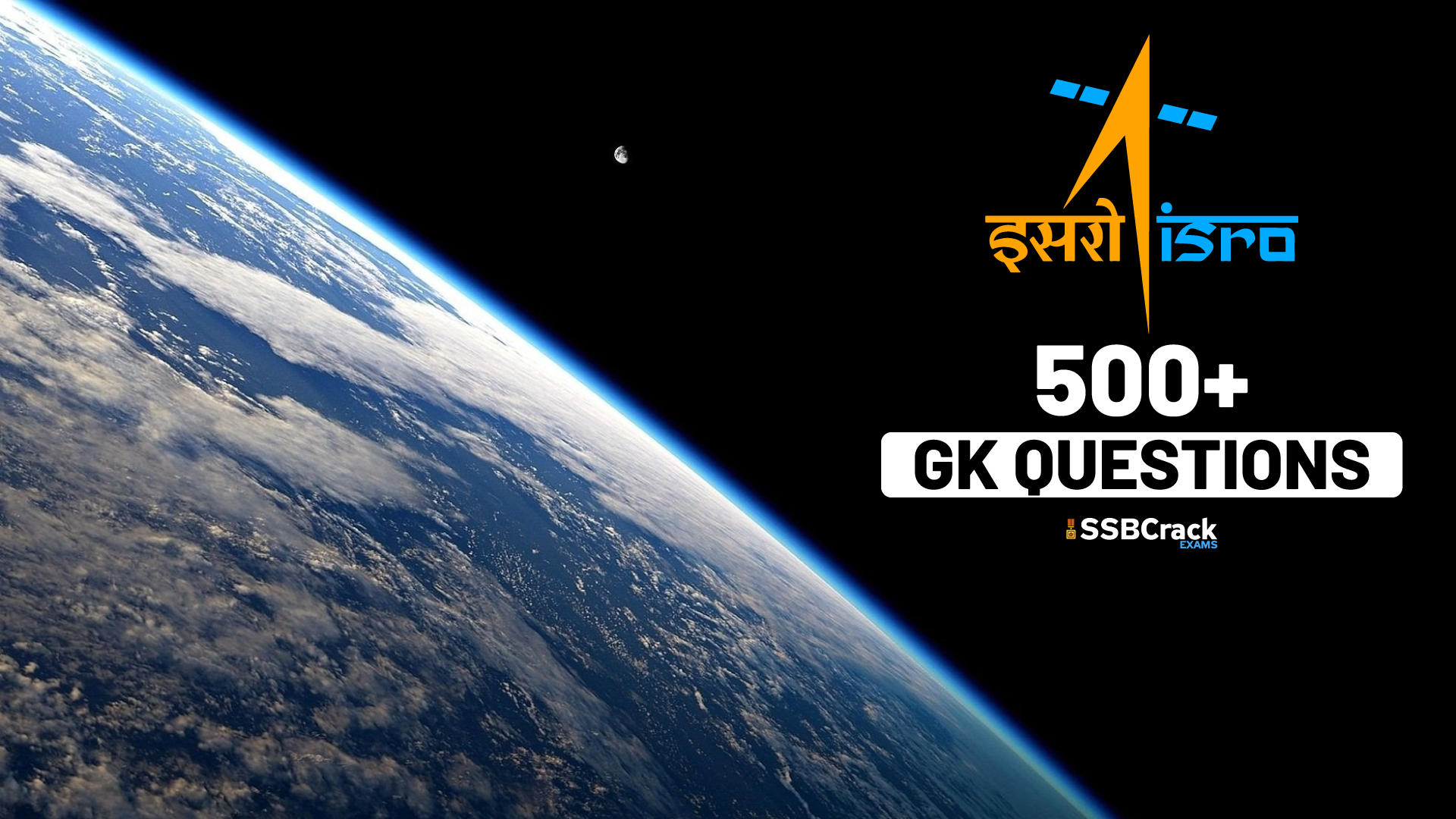
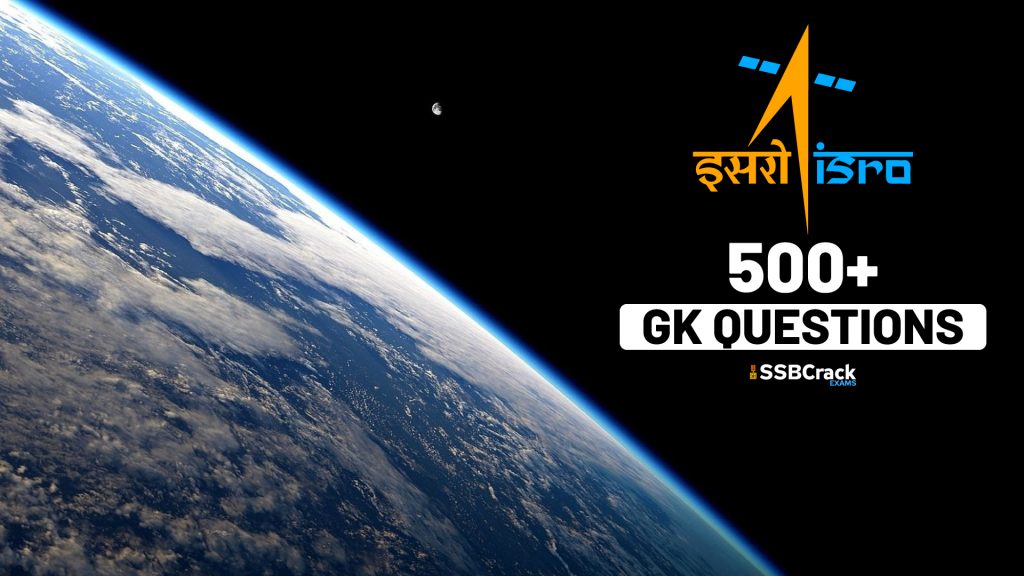





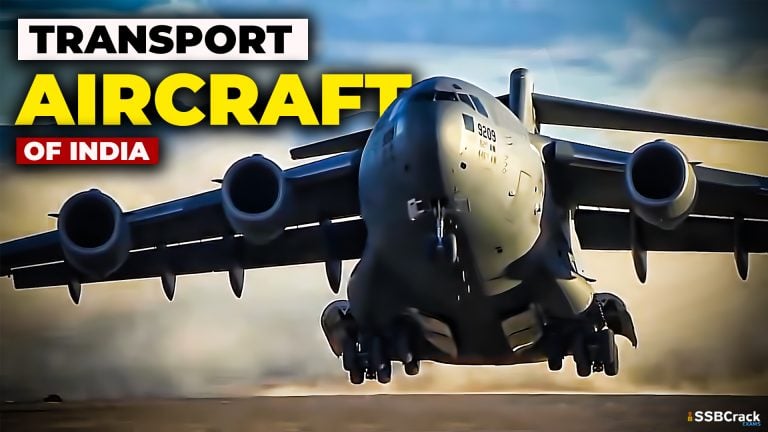
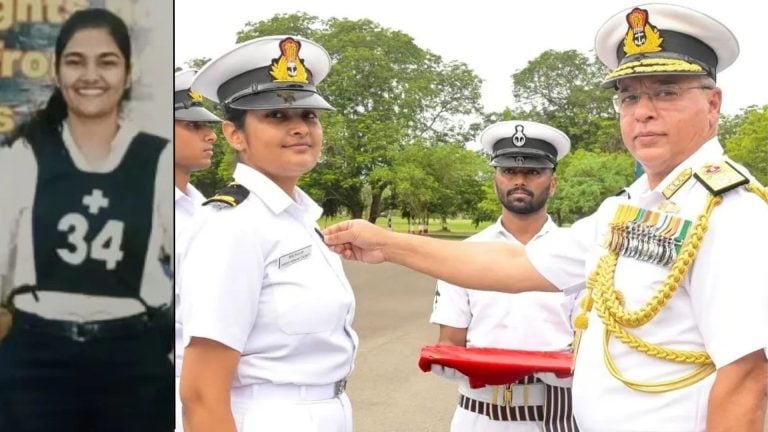
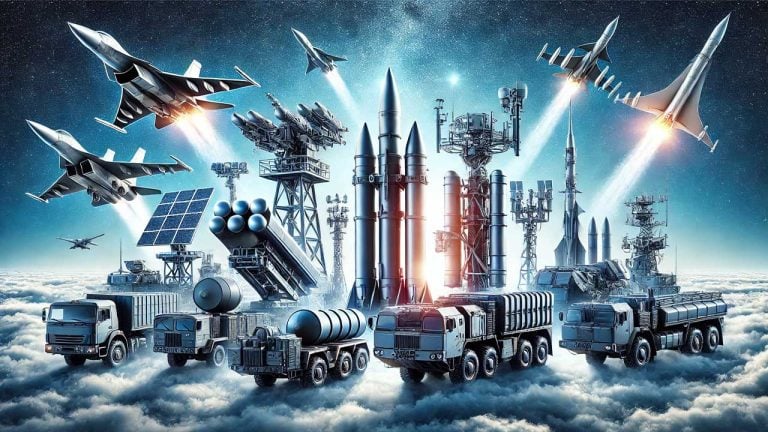

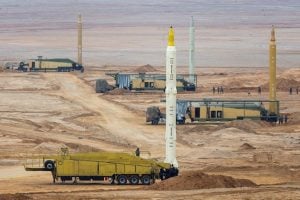


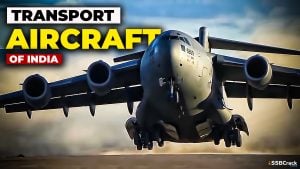


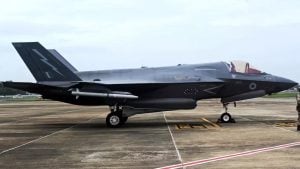
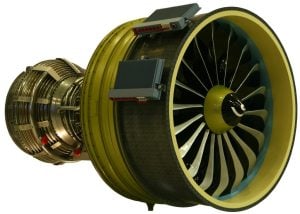


1 thought on “500+ ISRO Related GK Questions For All Defence Exams And SSB Interviews”
Very informative details. Thanks 👍 for giving such a wonderful knowledge.